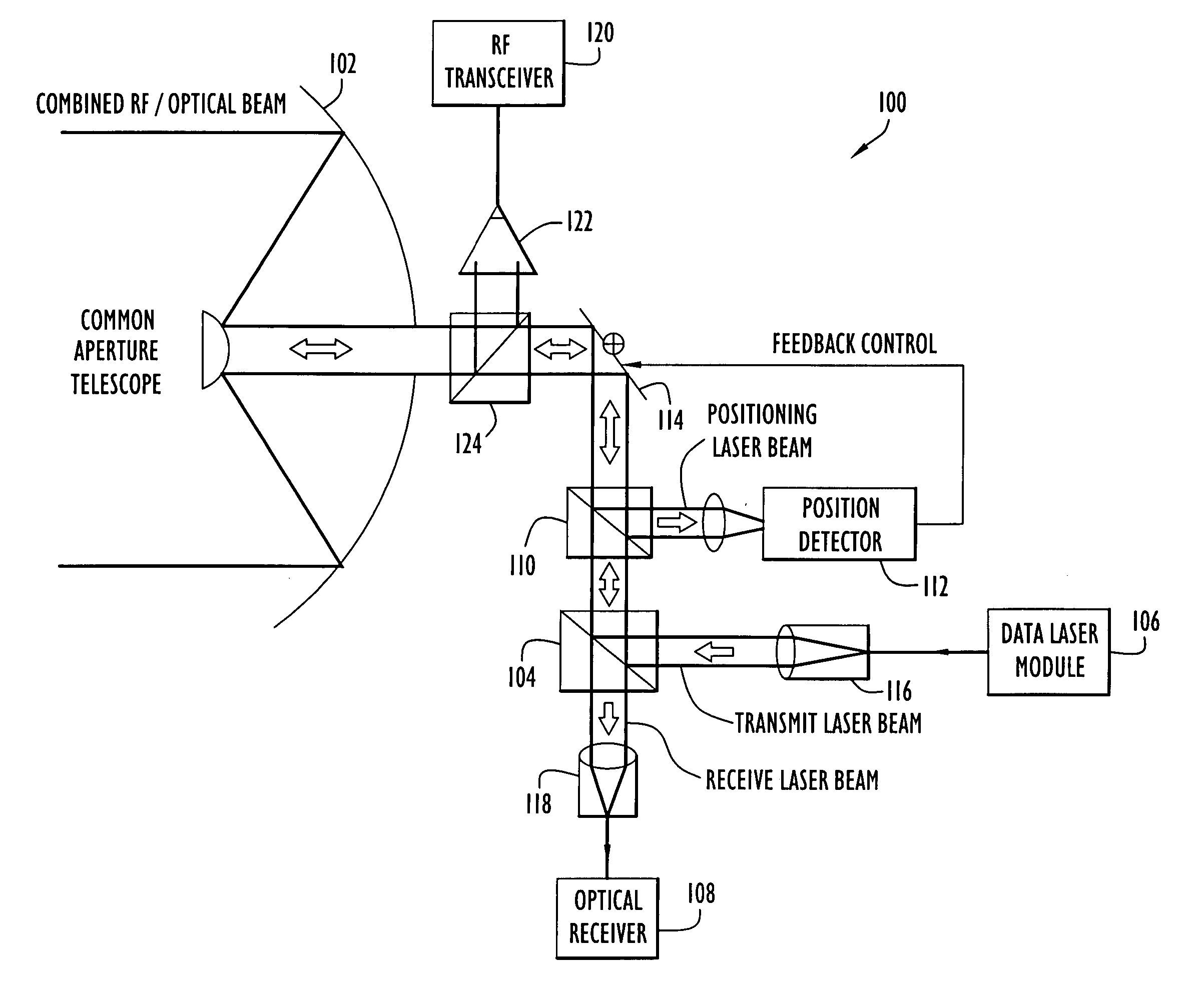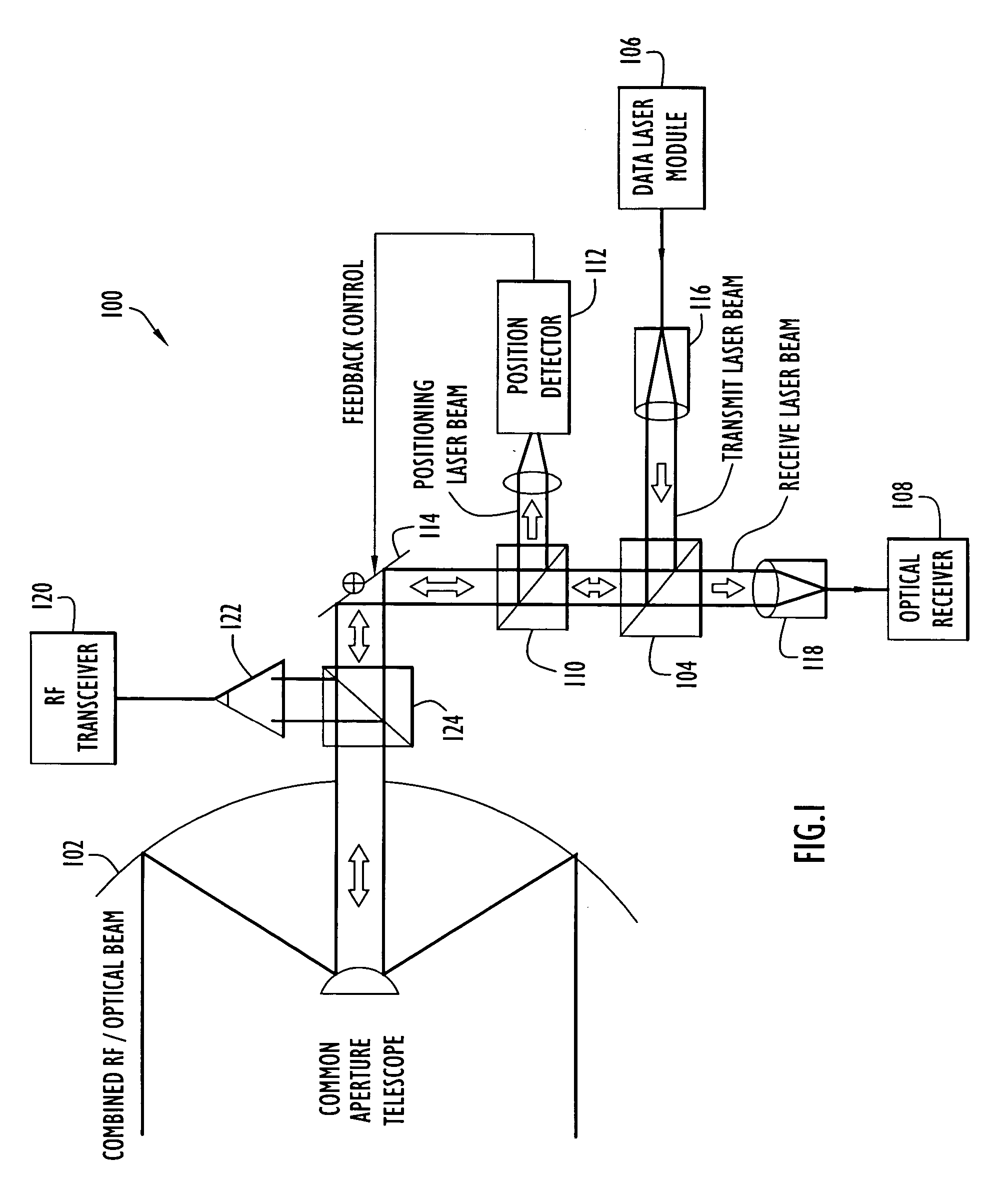Communication transceiver architecture
a technology of communication transceiver and transceiver body, which is applied in the direction of satellite communication transmission, electrical apparatus, radio transmission, etc., can solve the problems of reducing the system's sensitivity to slight misalignment and environmental factors such as vibration and temperature changes, and achieve the effect of reducing the system's sensitivity
- Summary
- Abstract
- Description
- Claims
- Application Information
AI Technical Summary
Benefits of technology
Problems solved by technology
Method used
Image
Examples
Embodiment Construction
[0021] The following detailed explanations of FIGS. 1-6 and of the preferred embodiments reveal the methods and apparatus of the present invention. A free-space laser communication transceiver architecture according to an exemplary embodiment of the present invention is shown in FIG. 1. The architecture depicted in FIG. 1 is a conceptual diagram illustrating major functional units, and does not necessarily illustrate physical relationships.
[0022] Transceiver 100 includes a common aperture telescope 102 that transmits laser beams toward a far-end transceiver and receives laser beams from the far-end transceiver to effect two-way communication. Preferably, laser beams are transmitted at one wavelength and received at another wavelength such that telescope 102 can simultaneously transmit and receive laser beams. Additionally, telescope 102 can receive a laser beam used to determine the angular position of the far-end transceiver, which can be used to control the pointing direction of ...
PUM
 Login to View More
Login to View More Abstract
Description
Claims
Application Information
 Login to View More
Login to View More - R&D
- Intellectual Property
- Life Sciences
- Materials
- Tech Scout
- Unparalleled Data Quality
- Higher Quality Content
- 60% Fewer Hallucinations
Browse by: Latest US Patents, China's latest patents, Technical Efficacy Thesaurus, Application Domain, Technology Topic, Popular Technical Reports.
© 2025 PatSnap. All rights reserved.Legal|Privacy policy|Modern Slavery Act Transparency Statement|Sitemap|About US| Contact US: help@patsnap.com



